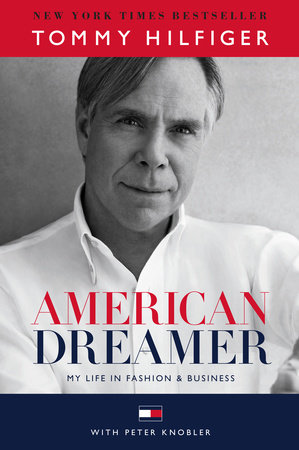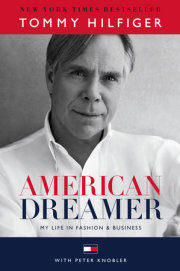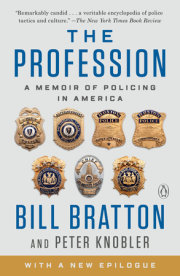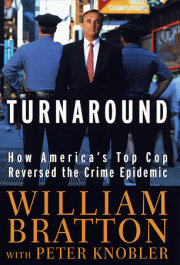CHAPTER ONE
Imagine
I was always planning my escape. Mostly I dreamed. I took myself out of where I was and put myself somewhere else. How could I sneak out of school that afternoon? Where was I going that weekend? Where was the party? I dreamed of cars, sports, girls; of making money, enjoying life, being a rock star. I saw myself on a boat in the Bahamas and felt the wind in my face, heard the sails flap as we came about, looked up the mast into the white clouds and blue sky. I was there.
I had eight brothers and sisters, and one Sunday morning my father was driving all of us in the station wagon to Denton Hill, a ski area in Pennsylvania, our gear crammed in the back and on the roof. As everybody vied for attention, I gazed out the window and saw a cabin on the side of a mountain. I pictured myself in that cabin, but in my mind, the cabin was decorated like a Swiss chalet and there was a fire blazing in a big stone fireplace. My skis were on the front porch, ready to go. I wanted to be in the ski patrol, so I pictured my backpack filled with a Swiss Army knife, a first-aid kit, a walkie-talkie, and a fold-up tent. I could smell the pine trees, see the bright white snow, feel the towering evergreens. I don’t know where the details came from; I was obsessed with Walt Disney movies, so probably from them or The Sound of Music. I dreamed so often I developed a photographic memory. I saw a scene, clicked it in my mind, and it was there forever. The colors, the feel, the shine, the patina. All right there.
My father, Richard, a watchmaker and jeweler, was not a man for fantasies. He said I had to learn a trade so I could have dependable work and make some money in this life.
“What’s a trade?”
“You learn to be a mechanic, or work in a machine shop, or be a carpenter.”
I didn’t want to be a robot, to wake up in the morning and do the same thing every day. Shop was better than sitting in algebra class, but it wasn’t a lot of fun. And I was looking for fun.
Home was not fun.
I was born in 1951 and grew up in Elmira, New York, in one half of a side-by-side double house at 921 Laurel Street, off Pennsylvania Avenue. My father’s family was German Bavarian and Swiss; my mom’s came from Ireland and Scotland. My maternal grandmother’s maiden name was Burns, and on the Scottish side we’re supposed to be related to the poet Robert Burns, but that was never spoken about in our house because Robbie Burns had a reputation as a womanizer and a drinker. The whole family, all eleven of us, ate dinner every night around one big table, and chaos reigned. At any given time there were a couple of babies in high chairs; I would be teasing my sisters, trying to make them laugh; one of my brothers could be flying across the floor; the noise level was high and buzzing. But when my father came home and slammed his fist on the table, everybody went silent. He would be the last to sit down, usually in a foul mood. We were all nervous around him, and in our nervousness we would giggle. Which infuriated him, which made us giggle even more, which made him even madder. Every night we tried to hold it together, and every night we made our father furious.
When we were alone, we would ask my mother, “Why is Dad so angry?” My mother, Virginia, a registered nurse who worked the six-to-eleven night shift, came home, made breakfast for all of us, and didn’t get a lot of sleep, always found the good in everything. A petite woman with chestnut brown hair and one green eye and one brown, she was kind, warm, sensitive, and loving. Mom was a true saint.
“Dad’s store is air-conditioned, and when he comes home it’s not air-conditioned here, sweetheart.” That was why he was angry in the summer. “The driveway hasn’t been shoveled. It’s icy, dear.” That was why he was angry in the winter. Dad was in a bad mood every season, pretty much all the time.
My father liked to go out with his buddies. They would play cards, shoot skeet, go to the bar, and bet on sports. He had a life outside the home that excited him—he was handsome, impeccably dressed, and loved by everyone who knew him. Around neighbors, customers, and friends, he was perfectly charming. At home he was something else, and no one saw it but us. With a mortgage to pay off and clothes for nine children to provide, home was expensive. He had been raised Protestant and converted to Catholicism when he married my mother, and he followed those rules, but Richard Hilfiger surely did not seem happy with his life, and although with so many children he was a good provider, I doubt he had wanted nine kids. Coming home was facing reality. When his car drove up the driveway each night, we all scattered and hushed.
If I left my bicycle in the driveway, if my shoes were on the stairs instead of in my room where I was supposed to put them, if I kicked my sister—about once a week from the time I was five until I was eleven, my dad punished and spanked me—hard. I hated and feared him, and I never wanted to be in his presence. I became an expert at hiding from my father when he was in the house. I was a phantom, a ghost. I dodged him because I never knew when he was going to find something I had done wrong and go at me.
My mother was so kind and loving, she didn’t like the physical punishment. She knew it was wrong. Her way of trying to protect me was to tell her husband quietly, “Enough.” She tried to smooth over our relationship, but I was always worried that I would set him off, and every week he proved my fears correct. Whether I was my best self or not, my father scared me every day of my life.
When there are nine kids in the family, things are complicated. Each of us had a distinct role in the household, but I’m not sure there was any rhyme or reason to them. Kathy, the firstborn, was creative and had great taste. She was constantly rearranging the house, a lamp here, a table there, moving the couch to the other wall. She kept everything clean and was every bit the student my father demanded that she be. She was also very aware of the effect of wealth, because we didn’t have it. She would point out how other people dressed, where they lived, how they lived: “Oh, look, they have a nice car”; “They have a beautiful home and a swimming pool”; “Their father is a doctor. They must be rich.” My older sister passed that awareness along to me. We would look at the children of business owners, and they would be well dressed and well groomed and living in nice houses, and we’d think, “They are perfect.”
Kathy tried out for the high school cheerleading squad at a time when cheerleaders were the apex of beauty and was extremely upset when she didn’t make the cut. But she was a good gymnast, so they asked her to be the Elmira Free Academy Blue Devil, the mascot. She was very attractive, but she never thought she looked good. She just didn’t realize how beautiful she was.
I was the second child, two years younger, and I couldn’t do anything right. I failed miserably in school, and though I tried hard and played with passion, I wasn’t an athlete. This pained my father to no end. One of Dad’s best buddies was Maury Collins, whose son Charlie was a great athlete. Maury would talk about Charlie and his football all the time. I think it got under my father’s skin because he couldn’t brag about me. Coaches would tell me, “You’re too short for basketball” or “You’re not big enough for football,” and I didn’t like baseball. There was nothing I was good at. Dad would tell me all about the other kids in the neighborhood: “Tommy Lynch is brilliant!” “That Scotty Welliver is a hell of a boy!” “Jimmy Rogers is a great basketball player!” Then he would look at me with disdain. I didn’t know what I had done to cross him, but by the time I reached junior high school it was clear to me that there was nothing I could do that would ever make him look at me in a positive way. So I stopped trying.
My sister Dorothy, born a year after me and named after my father’s mother, liked the name Susie, and requested that everyone call her that instead. She’s been Susie ever since. Susie was the smart one. Curious, adventurous, and popular, she was anything but a bookworm, yet she amazed everyone with her consistently stellar grades. She had a quick wit, a big crowd of friends, and an answer for everything. My father had a soft spot for her because she was often ill as a child and finally, in her teens, was diagnosed with multiple sclerosis.
Meanwhile, I was a dreamer. I had to be, because I couldn’t understand what everybody else was grasping. English, history, math—I just couldn’t follow the texts. When I tried to read a book, I’d make it two pages into a chapter and start reading from the bottom up. My eyes would jump from one line to another. I would land in the middle of a page and start reading upward. Sometimes I would start at the right side of the page and read backward—and I could not control it.
I wanted to learn. I was curious. I guess you could call me nosy, but I was always extremely interested in what was going on around me. And because I couldn’t get information the way everyone else did—my dyslexia wasn’t diagnosed until much later in life—I picked up on vibes, facial expressions, and body language and developed my own personal radar to carry me through. I faked it.
I’d sit in Mr. Huber’s high school math class and think about everything but algebra. It was so confusing to me—2x over y, squares, square roots—and I couldn’t help but worry, “If I get through this, I have to go do geometry!” There was no way I could pay attention; every time I tried, it confused me even more. So I just decided to show up, guess at answers on tests, and see what happened at the end of the year.
I saw other kids in the class getting it. When Mr. Huber passed out completed exams, I looked at their test papers and saw they got 90s. Mine would be full of red ink and a grade of 35. And while he was going over the answers and the students around me were correcting their mistakes and making notes for next time, I’d stare at my teacher’s Thom McAn shoes, his brown polyester trousers, his white wash-and-wear shirt, his wash-and-wear tie, and think, “Mr. Huber really must be a good Sears customer!”
Some teachers were sympathetic, because they were nice people and I was a likable kid, kind of a jokester. I had a lot of friends, and we had as much fun as possible without getting thrown out. I was good at imitation, and when a teacher would turn around to write on the blackboard, I was the one who would copy his gestures or mimic his voice to get a laugh, mostly to evade the fact that I was not doing well in school. I knew that they thought that for this boy there was probably not much hope.
I would sit in class, look toward the blackboard, and not even see it. What was the point? I couldn’t read worth a damn. But I could tell you exactly what the teacher was wearing.
One of my major embarrassments was having to repeat sophomore year. Even worse, I had failed into my kid sister Susie’s class; worse still, she was getting 90s, and I was lucky to get 50s.
Susie also had great taste in clothes. She was conscious of how colors coordinated, and she knew and cared about brands and took care of the contents of her closet and dresser. Susie folded each of her sweaters perfectly, was always precisely aware of what she had—my earliest recollection of inventory control—and guarded her wardrobe zealously; she didn’t want any of her sisters touching anything. There was a lot of talk among the girls in my family about clothing and style and what people were favoring. Without them I probably would not have paid a lot of attention, but hearing the chitter-chatter all the time certainly had an effect. A boy with five sisters knows things other boys don’t.
My sister Elizabeth—Betsy—came along four years after me. She looked like a Hilfiger, but with red hair, blue eyes, and freckles, she was more striking than the rest of us. Not only was she a real beauty, but Betsy was sweet, kind, and caring. She was organized and disciplined, the mirror image of my mother, and became my mother’s main helper. When I came home from school and there were fresh cookies or brownies or a cake on the counter, Betsy and Mom had been at it together. Betsy became the Hilfiger historian; anytime anyone wants to know about the family, she’s there with the info.
My brother William Henry was born a year after Betsy. Meticulous even as a little boy, Billy loved to sketch and draw, and he was excellent at math. When we first got jobs, my sisters and I would take the money we’d earned and go out and buy something. Billy saved every penny. Sooner or later my sisters and I would outspend our earnings.
“Billy, can I borrow ten dollars?”
“Yeah, but I need it back by Tuesday, or I’ll charge interest.”
Two years after Billy, Bobby showed up. A ball of pure energy, he destroyed several cribs—he shook and rocked them apart because he just didn’t want to be inside!
Bobby was always a wiry, frail kid, but when he got to junior high school he started lifting weights and building muscle. By sophomore year he was pretty buff. He was a great natural athlete and a daredevil with no fear at all. Bobby had a funny and sweet nature, and as he grew older he started getting into trouble. We had a motorized minibike, all of us kids’ favorite mode of transportation, and my father would say, “Don’t go in the road with it. You’re not allowed in the road.” Well, Bobby would get on and hit the road. When he’d get back and my father tried to raise a hand to him, Bobby would push Dad off or run away. I could never do that.
Bobby made the football and the wrestling teams. Junior year he was a wrestling star. Senior year he won the New York state championship and earned a junior college scholarship to the State University of New York at Delhi. Bobby was a two-time National Junior College Athletic Association All-American wrestler at Delhi and set the record for the most wins at the NJCAA National Wrestling Tournament. He was selected to the Region III 1970s All-Decade Wrestling Team and earned a place in its Wrestling Hall of Fame. SUNY Delhi named him Athlete of the Year in 1979. He transferred to Appalachian State, in Boone, North Carolina, and won back-to-back Division I national championships. My father finally had a son to brag about. I was happy for Bobby and happy that my dad was in a good mood.
Copyright © 2016 by Tommy Hilfiger. All rights reserved. No part of this excerpt may be reproduced or reprinted without permission in writing from the publisher.








